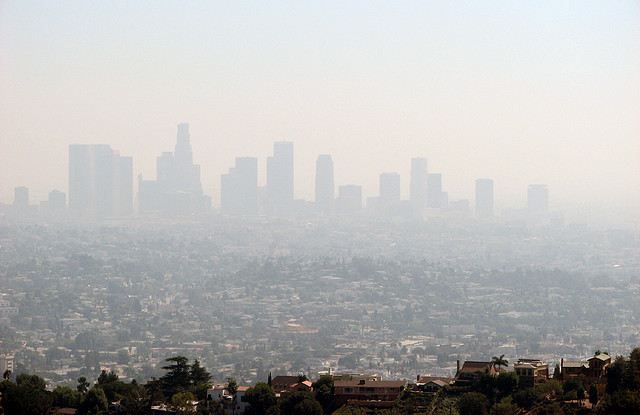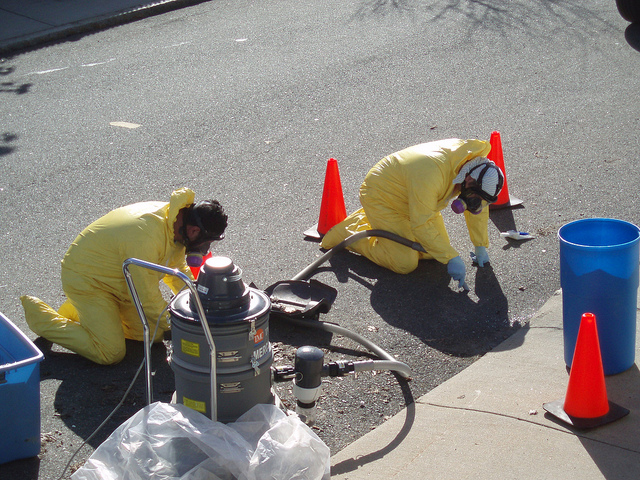Striving to meet wastewater compliance limits? Your treatment processes are only as good as the operators running your facilities—which is why every state and Puerto Rico have set specific operator certification standards for wastewater treatment plants. Do you know your state's requirements for:
Audit, Compliance and Risk Blog
Environmental State Differences Checklists Expanded to Include Operator Certification Requirements
Posted by Melanie Powers on Thu, Oct 16, 2014
Tags: Corporate Governance, Business & Legal, Environmental risks, Environmental, EHS, STC
Earthquakes: Are You Ready to “Shake Out” on October 16?
Posted by Allison Campbell on Tue, Oct 14, 2014
Once a year in our office, someone walks through the halls ringing an old-fashioned school bell. We immediately stop what we are doing, crawl under our desks and brace ourselves, and wait. A few moments later, one of our earthquake marshals comes by to tell us that it is safe to leave the building, and we carefully make our way down the stairs to the designated meeting spot. After checking the staff list and verifying that everyone made it out “safely,” our marshals let us return to our work. It wasn’t an earthquake—this time.
Tags: Corporate Governance, Business & Legal, Employer Best Practices, Health & Safety, Environmental risks, Environmental
The Occupational Safety and Health Administration (OSHA) has long required all employers to report work-related accidents that result in three or more deaths or serious injuries (what OSHA calls "catastrophes"). On September 18 OSHA published changes to these requirements that expand employers’ reporting requirements effective January 1, 2015 (I blogged about OSHA’s proposal here).
Tags: Corporate Governance, Business & Legal, Employer Best Practices, Health & Safety, OSHA, Employee Rights, Environmental risks, Environmental, EHS
OSHA regulates workplace air contaminants to protect employees from exposures to airborne chemical and particulate contaminants in workplace air. Generally, employee exposures are limited by permissible exposure limits (PEL) based on a time-weighted average (TWA) over an 8-hour workday. OSHA also allows exposure to some contaminants at greater “excursion limits” for short periods of time, subject to “ceiling values.” Many of these limits are based on voluntary standards developed by the American Conference of Governmental Industrial Hygienists (ACGIH).
Tags: Corporate Governance, Business & Legal, Employer Best Practices, Health & Safety, OSHA, Employee Rights, Environmental risks, Environmental, EHS, Hazcom
Important Clean Air Act (CAA) elements direct the US Environmental Protection Agency (EPA) to reduce emissions of hazardous air pollutants (HAPs). Unlike the conventional pollutants associated with regional problems such as smog or acid rain, HAPs represent a list of 187 specific air toxics that can be harmful in low concentrations in much smaller areas. HAPs are subject to tighter controls and lower permitting thresholds.
Tags: Business & Legal, Health & Safety, Environmental risks, Environmental, EHS, EPA, Greenhouse Gas, ghg, Hazcom, mact
EPA Seeks Comments On Accidental Release Prevention Requirements
Posted by Jon Elliott on Thu, Sep 04, 2014
In August 2013, President Obama issued an Executive Order directing federal regulatory agencies to review specified regulatory programs that are designed to prevent catastrophic releases of toxics: Occupational Safety and Health Administration (OSHA) Chemical Process Safety Management Standard (PSM); Environmental Protection Agency (EPA) Accidental Release Prevention (ARP) program and Emergency Planning and Right-to-Know Act (EPCRA) program; and Department of Homeland Security (DHS) Chemical Facility Anti-Terrorism Standards (CFATS) program (I blogged about the EO here, OSHA’s consideration of PSM changes here, and about one of the agencies’ joint reports on progress here). EPA has just issued a request for information on the possible revisions to ARP requirements, which are described below.
Tags: Corporate Governance, Business & Legal, Health & Safety, OSHA, Environmental risks, Environmental, EPA
The 15th Annual Creek Week will take place September 20th – 28th, 2014. Creek Week is an annual community event celebrating Santa Barbara’s local creeks and the ocean with many groups sponsoring events to help build awareness and stewardship of the natural treasures of the area.
Tags: Corporate Governance, Business & Legal, Health & Safety, Environmental risks, Environmental, EHS
I love a good novel with an environmental theme and reading in the summer is one of the best ways to relax. There have already been many days this summer where it’s too hot to do anything except sit under a tree, sip a cold drink and get immersed in a novel. So I have created a list of books that I think are some of the best environmental fiction reads.
Tags: Business & Legal, California Legislation, Environmental
Now that you’ve switched from ordering paper or CD publications to online ones from STP, I thought I’d share a few creative ways to make your old binders and CDs useful!
Tags: Business & Legal, California Legislation, Environmental, EHS
Mount Polley Dam Breach: KSM Mine Opponents Renew Fight
Posted by Mark Sabourin on Mon, Aug 11, 2014
Tags: Corporate Governance, Business & Legal, Employer Best Practices, Health & Safety, Environmental risks, Environmental, EHS, Hazcom, effluent, Canadian










